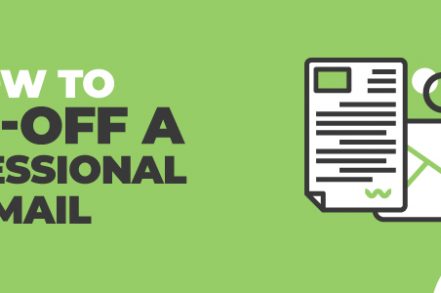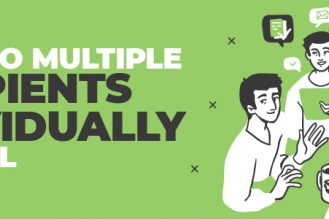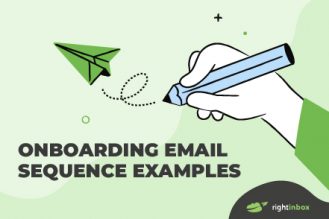Working out how to appropriately sign-off professional emails is often one of the most awkward parts of business comms. And getting it right is an art form.
Overly-formal emails and messages that are too casual can both be off-putting. And getting the closing wrong can make you come across as presumptive (“Look forward to hearing from you soon”), cold (“Best”), or even annoyed (no sign-off).
This tonal miscommunication can be the difference between building a strong, productive business relationship, or inadvertently nipping one in the bud.
A great email closing avoids any awkwardness and strikes the right tone – and it also motivates the reader to take the desired action.
Here’s how to ensure you sign-off your professional emails correctly:
Consider Your Relationship with the Recipient
There’s no one-size-fits-all solution to professional emails: the appropriate sign-off will depend on how well you know the recipient, as well as the tone of your relationship.
That said, it’s usually better to err on the side of caution. Being too casual can cross an unspoken line for many professionals, even if you judge your relationship to be less formal.
Always Include a Closing Remark
Email sign off isn’t just about your signature: you should always include a closing remark before your ‘Kind regards’ or ‘Thank you’. Nailing this closing remark is vital for moving the recipient towards the desired outcome, whether that be a reply, a meeting, or closing a sale.
Think of your closing remark as a CTA, and personalize it to the objective of your email – less “Hope to hear from you soon” and more “I look forward to hearing your thoughts on [x issue].” Use persuasive language to motivate the reader to take action.
Furthermore, it’s important to ensure it is both sincere and realistic. So, no “see you soon” to out-of-town contacts.
Use an Appropriate Sign-Off Before your Name
Everyone has personal preferences when it comes to email sign-offs.
This is why it’s best to play it safe with a commonly-used sign-off – especially for recipients you’re contacting for the first time. This is one area of your email where trying to stand out from the crowd and do something different doesn’t always go down well.
Commonly used professional email sign-offs include:
- Best regards
- Best wishes
- Kind regards
- Many thanks
- Thank you
- Sincerely
If it’s the first time you’re reaching out to a recipient, you should also use your full name.
Ensure your Email Signature is Updated
Your professional email signature should include the following:
- Name
- Job title
- Company name/logo
- Company address
- Company website
- Email address
- Phone number
- The logos of any current awards your company has received or events you’re participating in
It’s essential to keep all these details regularly updated to ensure your company seems both legitimate and switched on.
Sign-Off Examples: Friendly Professional Tone
A lot of sign-offs these days exist somewhere between stern professional and friendly. It’s a way to keep things appropriate while avoiding any stodginess in your communication. Some great friendly but professional sign-offs are:
Best
This is one of the easiest sign offs to use. It’s one word, it wishes all the best to your recipient, and it’s somewhat informal (compared to its more formal cousin “Best Regards”).
Thanks
Saying thanks can put you in someone’s good graces. Make sure that you don’t use it after asking a request from someone, or it can come across as a little demanding.
Cheers
Brits and Australians will instantly recognize this sign-off. And many Americans are adopting it as well. It’s a friendly, short sign-off that works because it leaves a positive impression on your recipient.
Talk Soon
This sign-off makes it clear that your conversation is going to continue in the near future. It’s particularly powerful when communicating with clients or prospects, since you’re planting the seeds of further engagement.
Sign-Off Example: Stern Professional Tone
Friendly professional sign-offs are great and they have their place. But when communicating with someone who you do not have a relationship with already, it can be best to err to the side of caution and formality.
Here are some tried and true professionals sign-offs to consider:
Sincerely
You don’t always need to reinvent the wheel with your signoffs. “Sincerely” connotes a caring attitude toward the other person without any implied presumptuousness.
Respectfully
This sign-off doesn’t work so well for standard business communication. However, when communicating to someone in a place of authority — such as a sitting government official — it’s great to have in your arsenal.
Yours Faithfully
This, and it’s sibling “Yours truly” are great placeholders when you can’t think of any other way to sign off. It implies that you’re trustworthy and that you are on the recipient’s team instead of holding any animosity.
Kind Regards
This is a version of “best regards” that actually works in formal business settings even better. It allows you to take a softer approach, all while wishing well in a very neutral manner.
Sign-Off Example: Work Colleagues
The same rules that apply with authority figures or clients don’t always translate to coworkers. Since the relationship is more casual and comfortable, the sign-offs you use will look a little different. Let’s look at some examples:
No Sign-off
There aren’t a lot of situations in which it’s recommended to leave out a sign-off altogether. However, when chatting with coworkers who you already know and have rapport with, it actually keeps the conversation running smoothly.
Thanks in Advance
This is an example of a sign-off that is actually quite risky. You can come off as entitled or rude, expecting that someone will fulfill your wishes without even asking them. Use with caution.
Blessings
Business and religion typically don’t mix very well. It’s best to keep your faith out of your business communications unless the other party expressly mentions it and you are both aligned in your beliefs.
Take Care
Take care is a nice generic saying that communicates your desire for the other person to stay in good health, finances, or other situations.
With Gratitude
One of the most powerful things in the universe is gratitude. People who are humble and grateful are excellent business partners, clients, and personal contacts.
Looking Forward To Your Response
This implies you are awaiting their action or response to your message. Hopefully you can speed things along if they’ve been dragging their feet.
Will You Please Let Me Know?
Similar to the above, it indicates that you’re expecting an answer. We speak a lot about calls to action when talking about emails or email marketing. In a way, will you please let me know is almost a request or a command to follow up with you.
Until We Speak Again
This leaves things fairly open-ended. It communicates that you’ve essentially communicated what you need to, and that you’ll simply reconnect when the timing is right.
Wishing You The Best
Similar to many kind sign-offs, this is expressing well-wishes for your contact. It’s a great neutral expression to use if you’re unsure of which sign-off to write.
Track emails, email reminders & templates in Gmail for free
Upgrade Gmail with the features it’s missing
Add to GmailDavid Campbell
David Campbell is the editor of the Right Inbox blog. He is passionate about email productivity and getting more done in less time.




